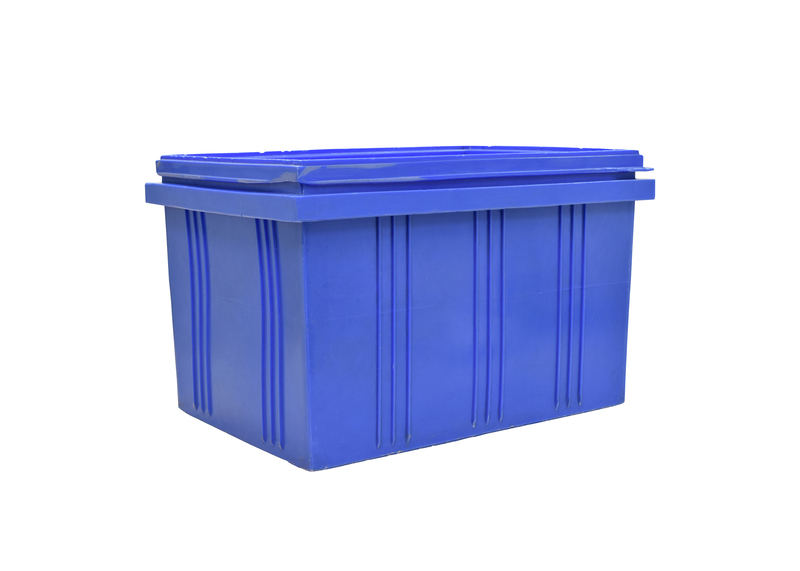Essential Techniques for Moving Heavy Items Alone
Moving heavy items by yourself can be a daunting task, whether you're rearranging your living room, relocating to a new home, or simply shifting furniture for cleaning purposes. Unfortunately, not everyone has access to a team of helpers or can afford professional movers at every turn. Mastering the best techniques for moving heavy objects alone is crucial for minimizing the risk of injury, protecting your belongings, and streamlining the process.
This comprehensive guide explores essential strategies for moving heavy items solo--including planning, preparation, the right tools, safety precautions, and tips tailored to various types of items. Let's discover how you can move heavy loads without risking your health or damaging your valuables!

Why Proper Techniques Matter When Moving Heavy Objects Alone
Moving heavy loads without assistance can quickly lead to muscle strain, back injuries, or damaged belongings. Understanding the core principles and techniques for handling bulky or cumbersome items by yourself lays the foundation for success.
- Injury prevention: Protect muscles, joints, and your back.
- Efficiency: Move large items faster, with less effort.
- Preservation of belongings: Reduce risk of dropping, scraping, or damaging furniture and appliances.
Common Challenges When Moving Heavy Loads Alone
Before diving into techniques, it's essential to understand the most common problems faced when relocating large items solo:
- Awkward shapes and sizes: Not all heavy items are compact. Furniture and appliances often have odd angles, making them hard to grip or maneuver.
- Limited leverage and strength: Without another person, you must rely solely on your own body strength and leverage.
- Narrow passages: Doorways, hallways, and stairs complicate the process, requiring extra planning.
- Risk of property damage: Scraping floors, bumping walls, or dropping items can cause expensive damage.
By identifying these challenges, you're prepared to address them with proper technique.
Pre-Move Preparation: Planning is Key
Moving large objects alone doesn't begin with the actual lift--it starts with careful planning. Preparation minimizes mistakes and smooths the path for a safer, more successful move.
1. Assess the Item
- Weight and bulk: Check the manufacturer's website for weight, or estimate using a scale.
- Breakdown potential: Disassemble furniture as much as possible; remove drawers, shelves, or detachable legs.
- Vulnerability: Cover fragile parts with blankets, bubble wrap, or towels.
2. Clear a Path
- Remove obstacles: Pickup rugs, toys, cords, and move other furniture out of the way.
- Measure: Ensure doors, hallways, and staircases accommodate the item's dimensions.
- Communicate if necessary: Tell others in your home about your moving plan, especially if you will use common areas.
3. Gather the Right Moving Tools
Using the proper equipment makes a huge difference in moving heavy goods on your own.
- Furniture sliders: Specialized pads placed under furniture legs for sliding across hard or carpeted floors.
- Moving straps (lifting straps): Even solo, shoulder- or forearm-lifting straps evenly distribute weight.
- Dolly or hand truck: Essential for large appliances or boxes when moving across flat surfaces.
- Work gloves: Protects hands from sharp edges and improves grip.
- Blankets, bubble wrap, and padding: Prevents damage to both the item and your home.
- Plastic wrap and tape: Holds padding in place or keeps doors/drawers closed.
Safe Lifting and Moving Techniques
With preparations complete, it's time to leverage effective methods for moving heavy items solo. These essential techniques protect your body and possessions.
1. Master the Basic Lift
- Squat, don't bend: Lower your body by bending your knees, not your back.
- Keep your spine straight: Maintain a neutral spine throughout the lift.
- Grip securely: Use your whole hand for a firm hold.
- Lift with your legs: Drive upwards using quadriceps and glutes.
- Keep the item close: Hold the load against your torso to reduce strain.
- Move slowly: Avoid jerky movements that can cause injuries.
2. Slide, Don't Carry
Wherever possible, sliding heavy objects reduces the risk to your back and arms. Use:
- Furniture sliders for smooth, hard surfaces.
- Blankets or towels placed under the object for sliding on hardwood or tile.
*Tip: Always check that the floor is clear of debris before sliding to prevent scratching!
3. Use a Dolly or Hand Truck
- Tilt the item onto the platform: Use your knee as leverage.
- Secure with straps or cords: Prevents tipping during transit.
- Control direction: Move slowly, especially on inclines.
- Choose the right model: Appliance dollies have straps and a wider base for washing machines or fridges.
4. Leverage Lifting Straps
Solo lifting straps utilize your body's strong muscles by distributing weight evenly.
- Adjust straps for your height and the item's size.
- Practice safe form by keeping back upright and using lower body strength.
Straps can free your hands to steady and balance items more safely than with standard lifting.
5. Safe Maneuvering Through Doorways and Stairs
- Pivot instead of lifting the full weight: Place one end down and rotate the item vertically if space is tight.
- Use corner guards or blankets: Protect both the object and the doorway frames.
- On stairs: Pull the item up one step at a time, keeping the heaviest part downhill. Use a stair-climbing dolly if possible.
Best Practices for Moving Specific Heavy Items Alone
Some heavy items require customized techniques to transport safely and efficiently. Here's an overview:
Large Appliances (Refrigerators, Washers, Dryers)
- Empty appliance and secure moving parts.
- Use an appliance dolly with built-in straps.
- Tilt gently and roll--never drag--on bare floors.
- Avoid laying refrigerators flat, as oil may enter the cooling lines.
Couches and Sofas
- Remove cushions, pillows, and detachable legs.
- Stand sofa upright ("vertical slide"): For tight spaces, pivot and slide vertically.
- Use sliders under each corner for solo relocation across the floor.
Heavy Boxes and Bookcases
- Test the box's weight before lifting--repack if too heavy.
- Reinforce with sturdy tape and lift from the bottom.
- For bookcases, empty all shelves and slide on a blanket or towel.
Beds and Mattresses
- Wear gloves for better grip.
- Bend mattress slightly and 'walk' it to the new spot.
- Use moving straps if it's particularly dense or unwieldy.
Injury Prevention: How to Move Heavy Things Safely Alone
Perhaps the most vital portion of this guide is how to safeguard your well-being while lifting and shifting heavy objects on your own:
- Warm up your muscles before heavy lifting with light stretches.
- Avoid twisting your torso while carrying weight. Turn your whole body instead.
- Take frequent breaks: Fatigue increases the risk of injury.
- Stop immediately if you feel pain or strain.
- Don't rush: Patience is key; slow, steady movements are safer and more effective.
- If in doubt, call for help: Some objects are too much for one person. Know your limits!
Pro Tips for a Smooth Solo Move
- Plan ahead: Make a checklist of items, required tools, and your route.
- Keep essentials handy: Water, a charged phone, and first aid kit.
- Wear appropriate clothing: Closed-toe shoes and flexible, non-slip garments.
- Label fragile or oddly balanced items.
Eco-Friendly and Cost-Effective Moving Practices
Moving heavy goods solo can also be environmentally friendly if you reuse materials and minimize waste:
- Use reusable moving blankets and furniture sliders instead of disposables.
- Recycle or donate packing materials afterward.
- Group small moves to minimize trips and fuel usage.
What to Avoid When Moving Heavy Objects Alone
- Don't attempt to lift more than your capacity.
- Never stand on unstable surfaces when lifting.
- Don't use makeshift equipment in place of professional tools.
- Don't rush through narrow spaces; protect both item and environment.

Summary: Safely Move Heavy Items Alone
Mastering the essential techniques for moving heavy items by yourself starts with thorough planning and preparation. Prioritize your safety with correct lifting methods, leverage equipment like dollies and moving straps, and adapt your strategy depending on the shape and material of your burden. Moving bulky things solo isn't just about raw strength--it's about preparation, technique, and understanding your own limits. With the guidance in this article, you can accomplish your move smoothly, efficiently, and with confidence--all while protecting your health and your possessions.
Frequently Asked Questions about Moving Heavy Items Alone
Can I move a refrigerator by myself?
Yes--if you use an appliance dolly with straps and take sensible precautions. Remove all contents and secure the doors before relocating.
What are the most essential tools for solo heavy lifting?
- Furniture sliders, for easy gliding across floors.
- Moving straps or lifting straps, to leverage body mechanics.
- Dolly/hand truck, for large or cumbersome appliances.
Are there items I should never attempt to move alone?
Yes--pianos, large safes, and industrial equipment are best left to professionals. Always assess the weight and risk relative to your ability and health.
How can I protect my floors and walls?
- Use sliders or blankets under heavy objects.
- Wrap sharp edges with padding or bubble wrap.
- Move slowly and use spotters for guidance where possible.
Now you're ready to tackle any heavy move--solo! Refer back to these tips whenever you need to move something significant. Your back (and your belongings) will thank you.



